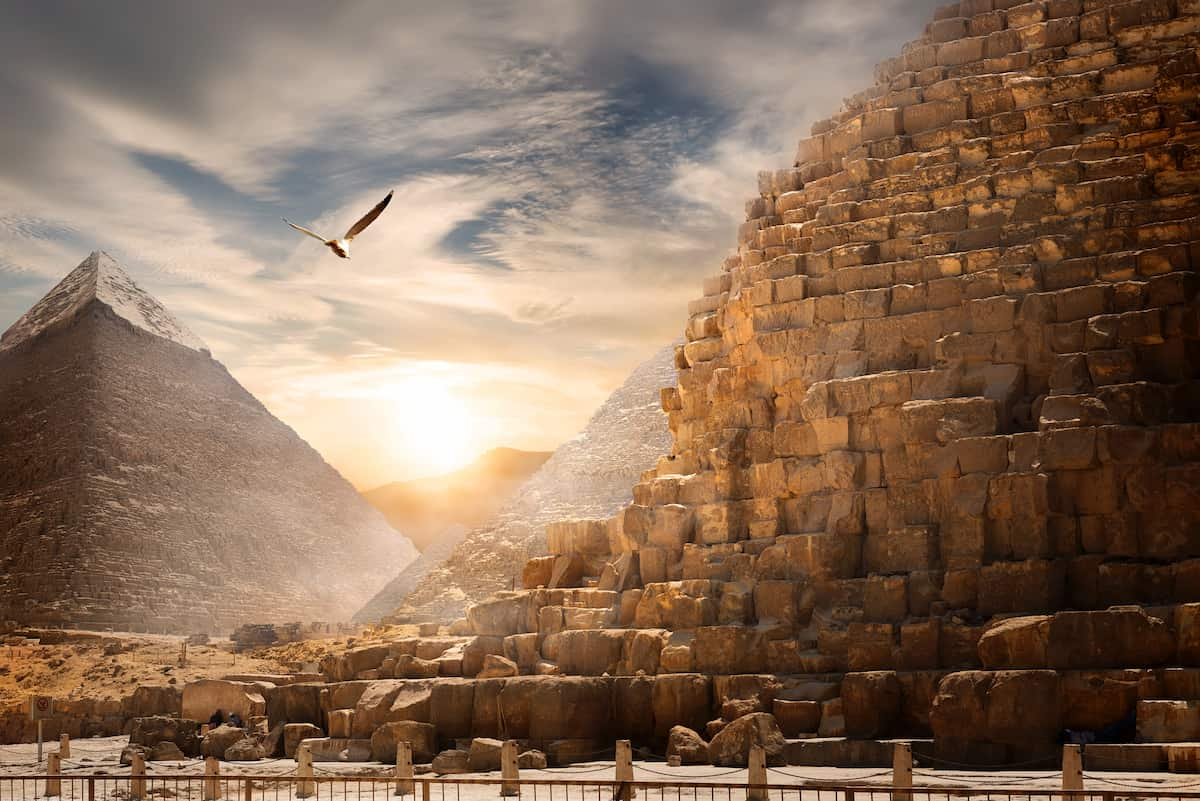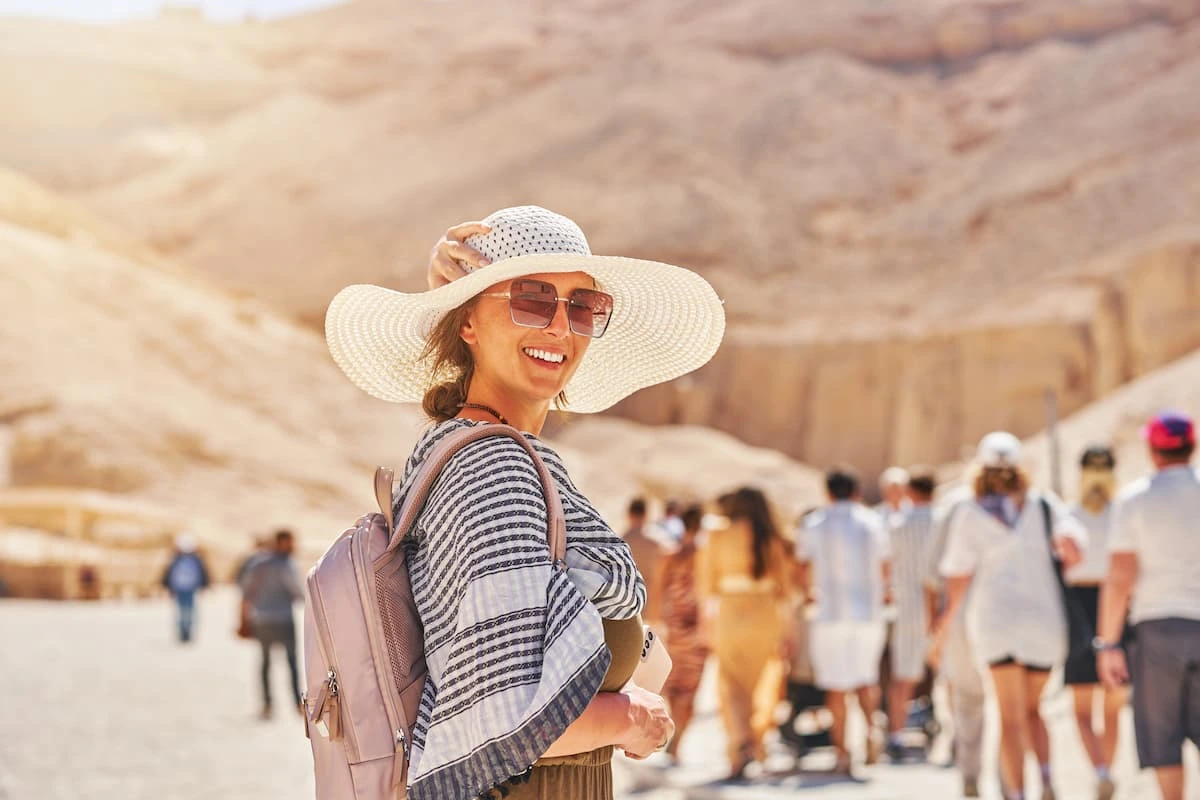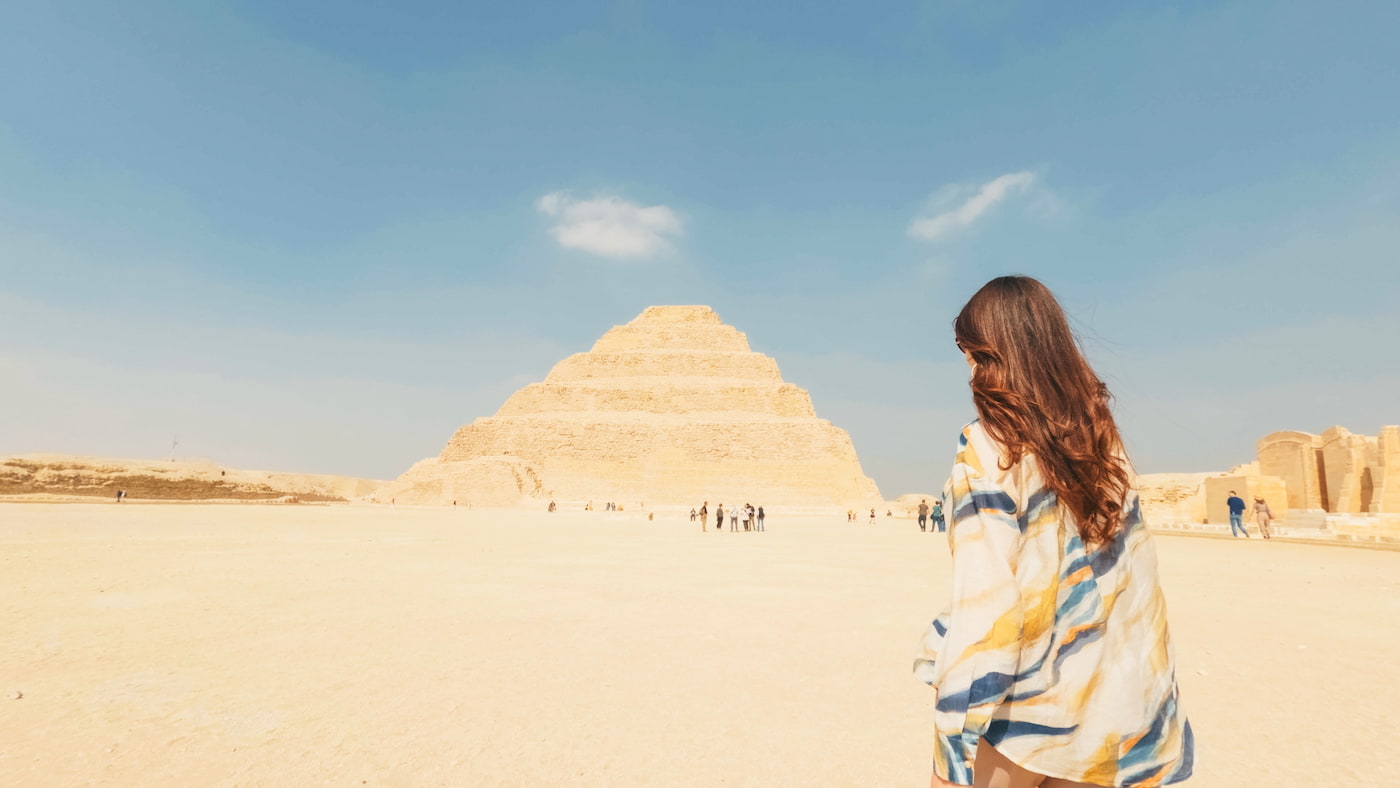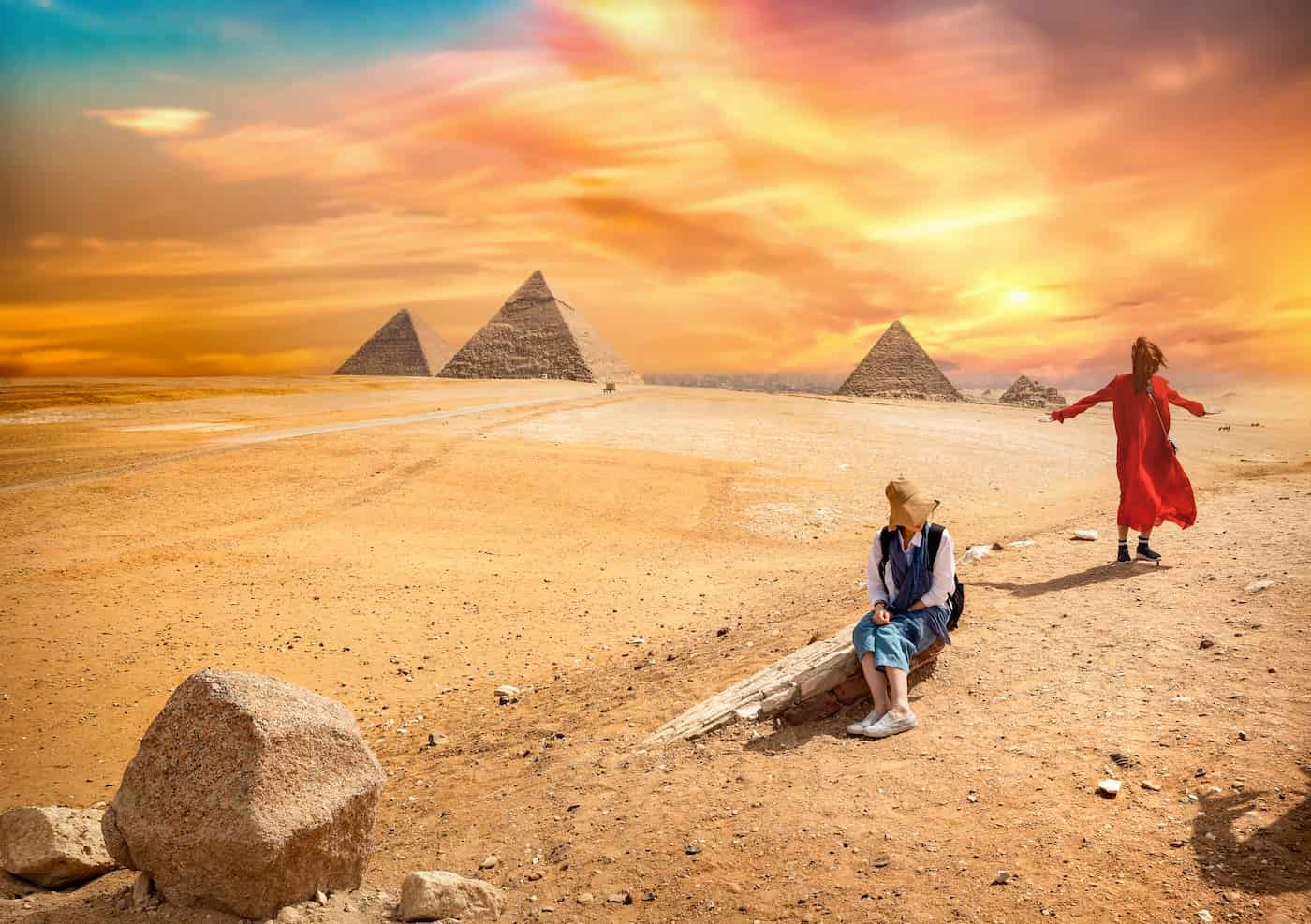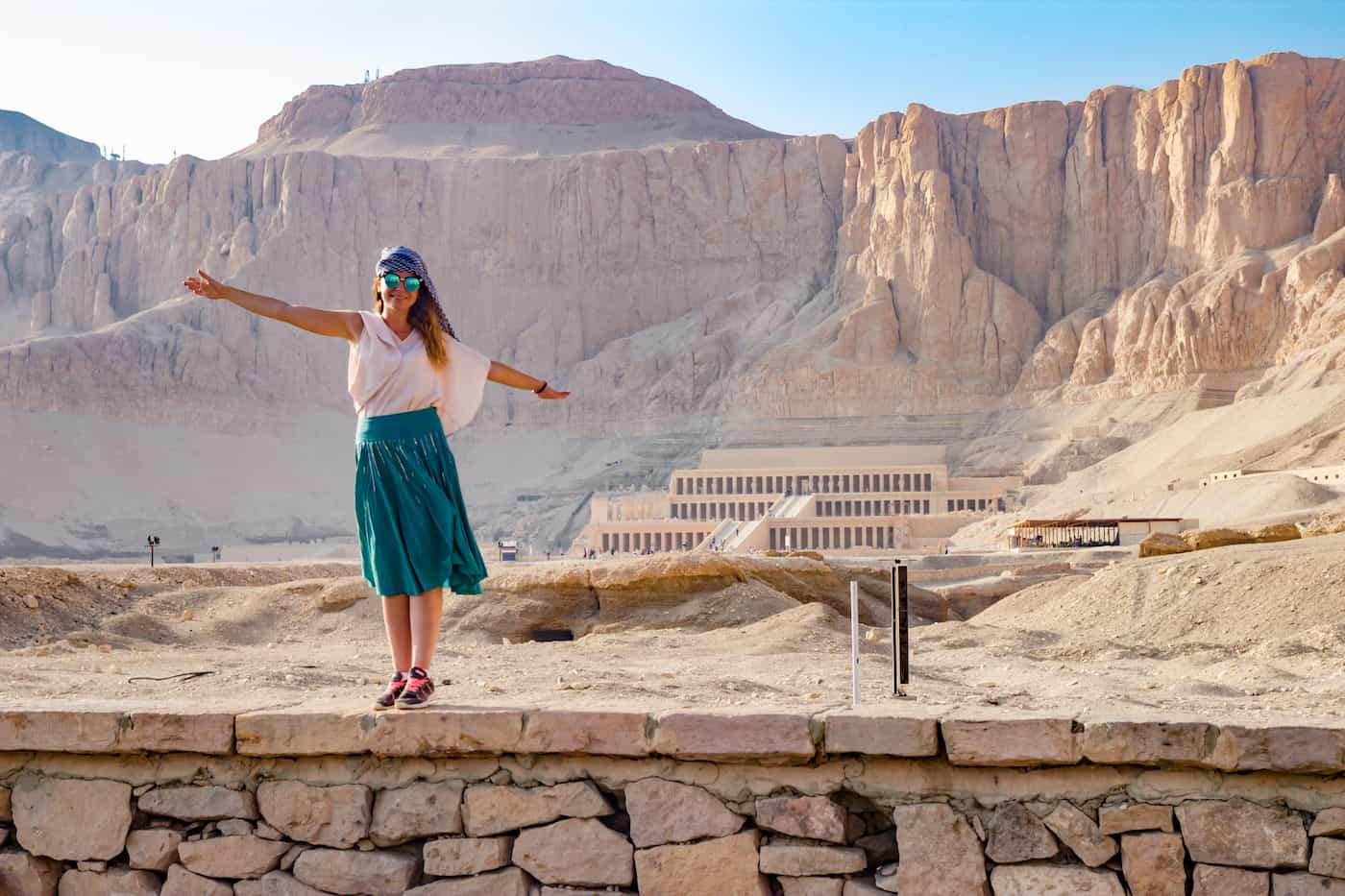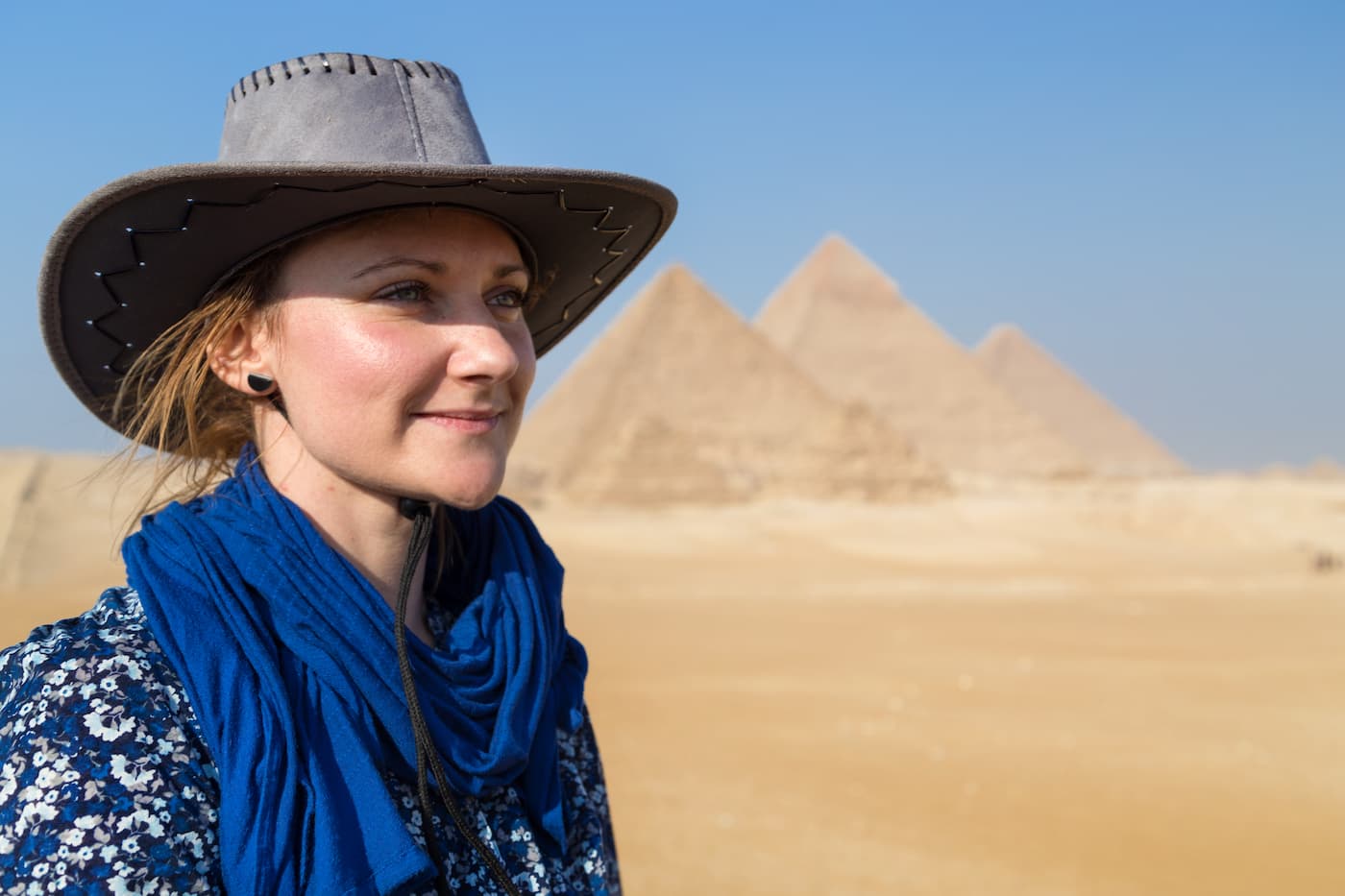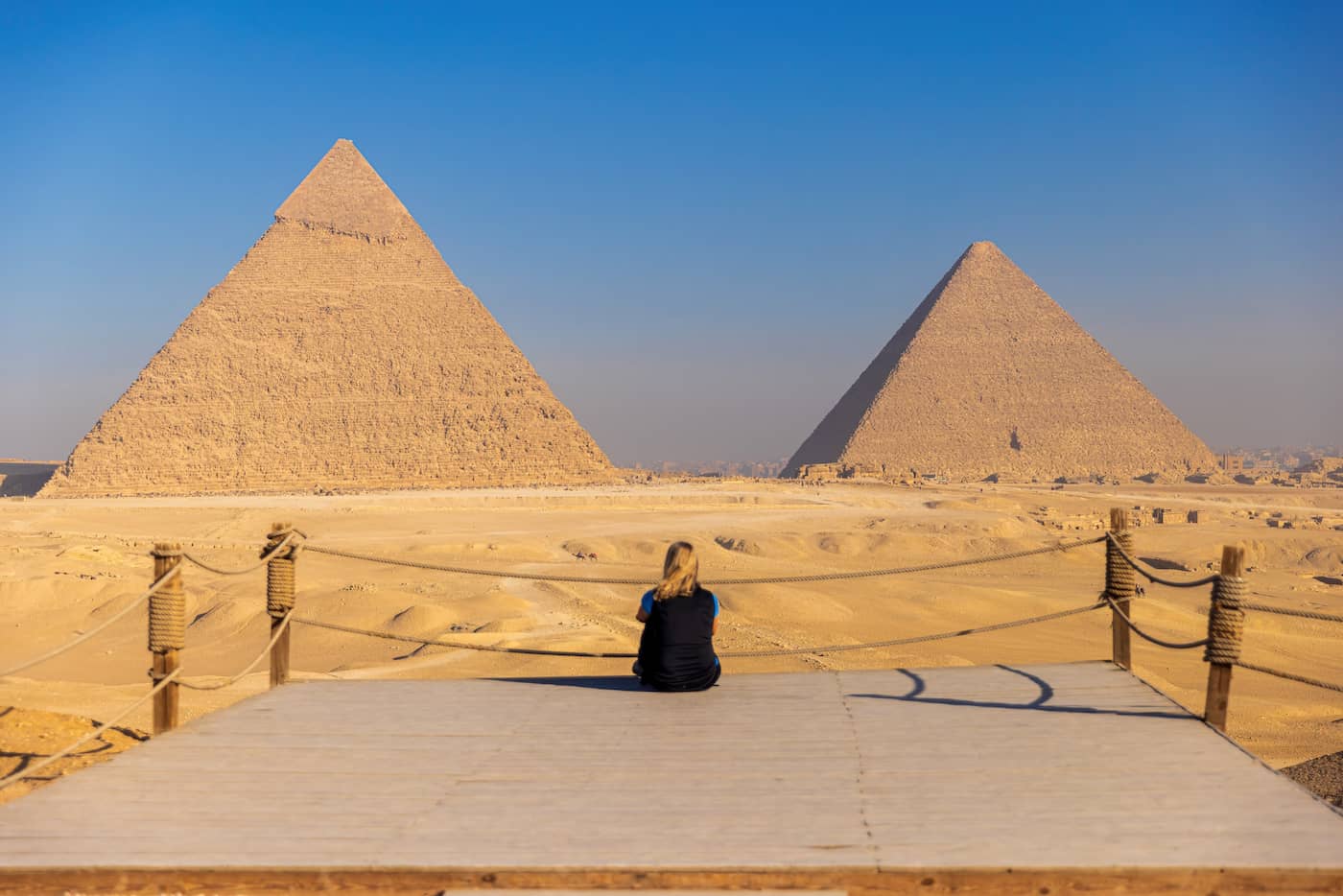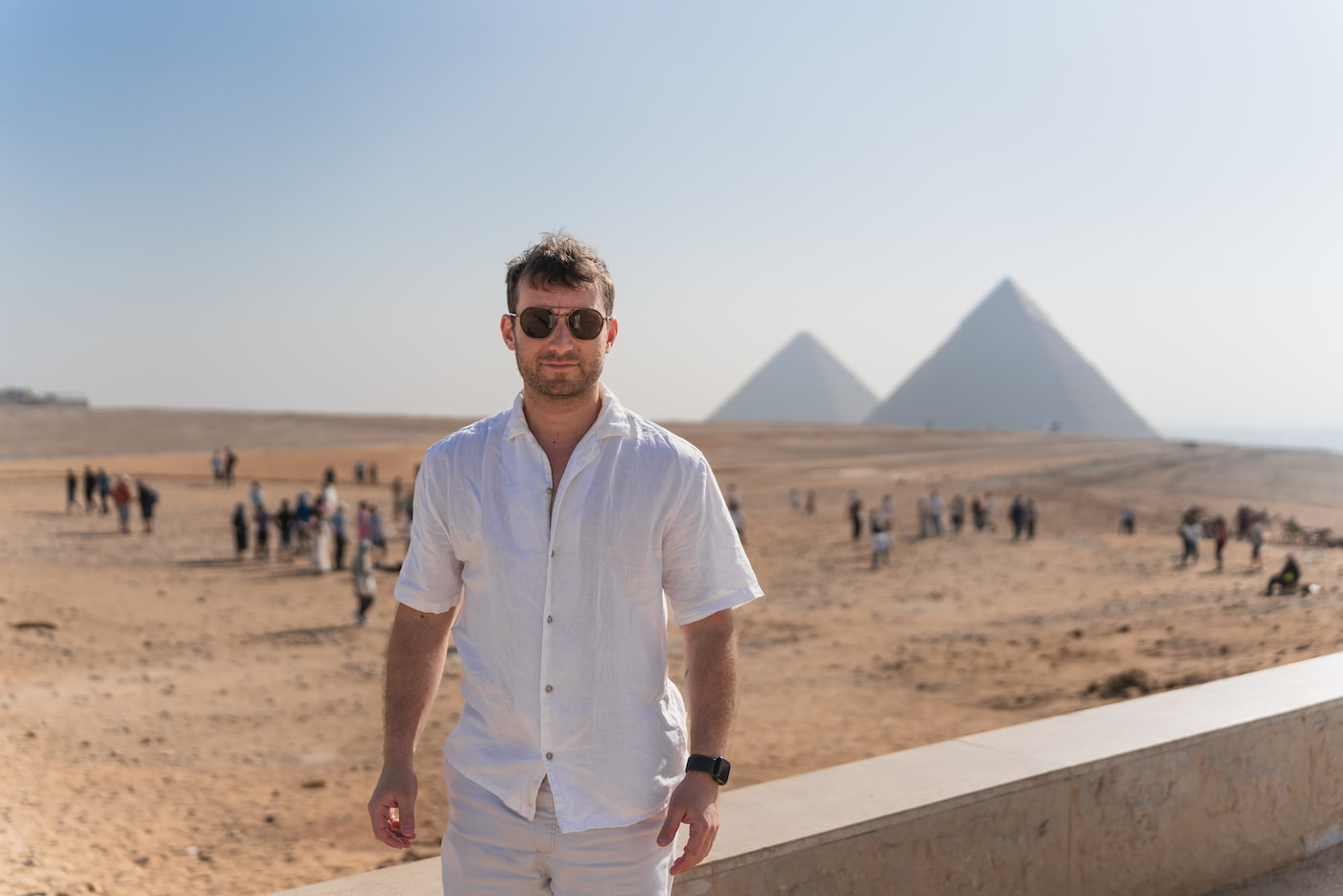15 Fun Facts About Ancient Egypt That Will Blow Your Mind
Ancient Egypt brings to mind grand pyramids, shrouded tombs, the riches of pharaoh, and many other mind-blowing tales. However, are you aware that the invention of toothpaste is also attributed to the ancient Egyptians? They used cosmetic products for their well-being as well as the enhancement of beauty, and even staged the first recorded labor riot in the known history of mankind. Egyptian civilization appears to be full of intriguing and outrageous tales and practices that may be unwarranted. That’s why we’ve gathered these fun facts about Ancient Egypt to shine a light on the lesser-known and often unbelievable sides of Egyptian life. This document does not claim that Egypt had magnificent buildings such as the pyramids, but rather depicts it as an intriguing country with unusual customs and activities that have never been seen elsewhere.
Let’s Dive Into the Marvels of Ancient Egypt that every history nerd will appreciate. So, if you love history, are wondering where you want to go, with the typical useless trivia, and always want to know something new. These are some miniature stabs of fun for you from the holiness of cats and the protection of magic to the rebellious prerogatives of children, not to mention the priests with faces full of make-up.
Based on the search query for truth about Ancient Egypt, interesting facts and secrets of its ancestry, or perhaps simple questions of the most interesting historical Egyptian facts, you have landed on the appropriate website, let us just uncover these wonderful mysteries and have some fun because Ancient Egypt was not about just plain sand, rocks, and tombs.
2. Fun Facts About Ancient Egypt
Ancient Egypt probably conjures in your head the impressive pyramids, the golden sepulchers, armored the well-off king. But, underneath these proud images is a society with its fair share of delightful surprises and wonders in terms of conduct, advances realized in technology, and even odd practices, though there are quite several quirky realities there. Some of these unexpected genius and ridiculous practices the Egyptians were noted for range from making toothpaste, worshipping cats, and starting the first ever strike in the world.
The focus of this write-up is to highlight the interesting, least spoken of facts regarding the Egyptian pupils who did not master in class. Such history does not simply refer to the achievements which can be found in the historical texts, but the crazy, the funny, and the extremely interesting sides of one of the most ancient and influential civilizations ever. You are going to love all the information in this article if you are a tourist, a history enthusiast, or a person who finds pleasure in random questions.
Should you be interested in any interesting facts concerning Ancient Egyptians, their hidden truths, or you’re just tired of the same old facts about Egyptian culture, then let’s go down a rabbit hole. There’s so much to see about Egypt that is below the surface that would amaze you!
1. Cleopatra Wasn’t Egyptian
When individuals envision Cleopatra in their minds, they see her as a stereotypical Egyptian queen who dons linen clothes, boasts a cobra headdress on her head, and rules on the banks of the River Nile. However, the true Cleopatra VII was hardly Egyptian. She was born in Alexandria, a thriving metropolis set up by Alexander the Great, and was a descendant of the Ptolemaic line of kings, the conquerors of Alexander the Great’s land.
The Ptolemies, a few centuries-long rulers of Egypt, had an interesting lifestyle. They inhabited Egypt but clung to their Greek roots. A Greek background is the reality; in fact, many of them did not speak the local Egyptian language alone. Cleopatra was the only family member who was different from the rest. She was the foremost family member to develop proficiency in the Egyptian language, and always regarded being able to do things the native way, such as wearing garb as an Egyptian and even making herself a physical part of the goddess Isis in political arts.
Cleopatra was incredibly popular among her people for her political skilfulness and ability to adjust to different cultures. She was not a mere leader as widely presumed; she proved to be a sound tactician, spoke numerous languages, and showed her capacity as a person in the language and politics, mainly focused on men in the Roman Empire. Even with her European roots, Cleopatra is known for ruling like an Egyptian and making a mark that is still hailed, puzzled upon, and embellished craftily to date.
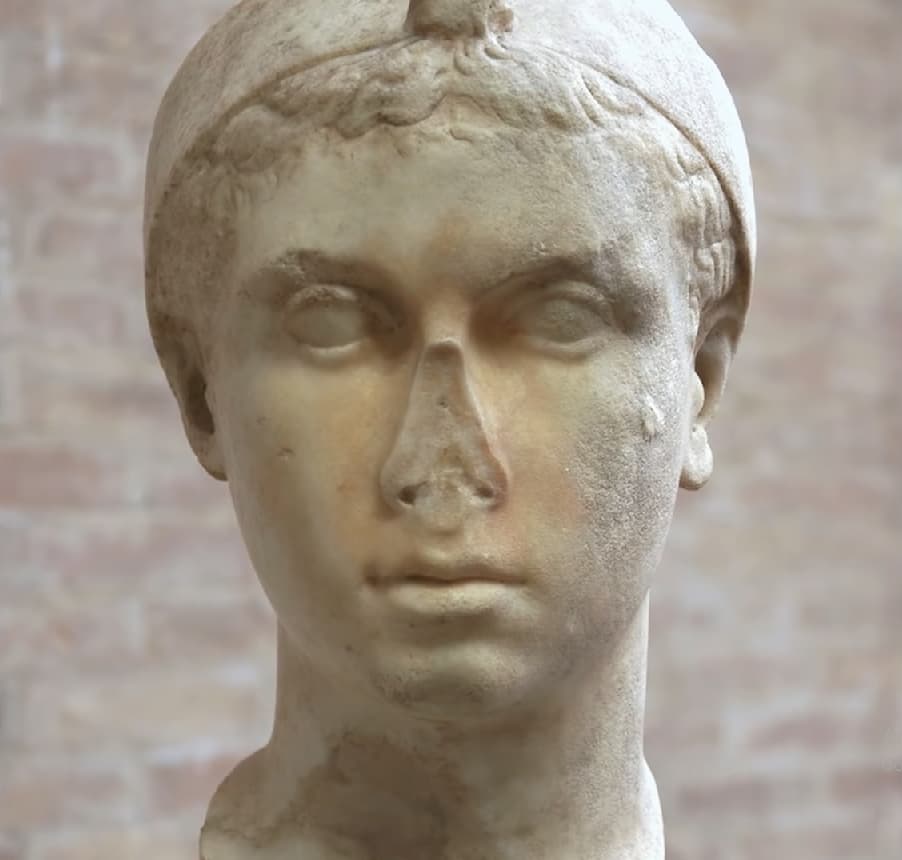
2. The First Toothpaste Came from Egypt Fun Facts About Ancient Egypt
Before the adoption of modern dental care techniques, including fluffy toothbrushes and toothpaste that is not unnaturally flavored, the people of Egypt were engaged in the tooling of their dental care regimen in creative and unexpected manners. To be precise, it used to be standard in the land of pharaohs, where the first available record of similar paste is dated to the fifth millennium BC, long before the very existence of any of our toothbrushes.
This paste was prepared by Egyptians from a mixture of abrasive agents: crushed egg shells, pumice stones, frankincense powder, frankincense, cow hoofs, wood ash, and sometimes soot. The ingredients were pounded until they turned into a very fine powder that was then applied to the teeth using a stick or even the finger. The resulting paste seems pretty ghastly and is not something you would like to eat, but it was great as it stripped off plaque or bits and pieces of food on the teeth.
The daily practice of oral care was considered vital during the period of the Ancient Egyptian civilization. This was most relevant to the more affluent groups of society and the priestly class, as they were well known for their cleanliness. It is a well-known fact that even though they had no idea about microorganisms or tooth decay. However, the poor breath and the unhygienic condition of the teeth were considered taboo in their society.
Such a remedy will seem strange and disgusting to us today, but it is one of the oldest forms of preventive dental care. Such an invention shows us that even in ancient times, the well-being of the teeth was at the center of attention.
3. Pharaohs Were Buried With Treasure And People
The ancient Egyptians’ customs during burials were complex because of their beliefs about the next life. Pharaohs and nobles were given such a grand burial as a practice that sometimes involved generations of humble family members. Under the largest tombs of mummies, common women and men who could be soldiers or slaves, guards, and support personnel willingly agreed to be buried alive. At one time, this also included pharaonic retinue, close family, treasure, coffins, burial ways, and attendants, which is why they called it preserving her dead.
Pharaoh’s body was drained of the blood, and unguents were then filled into the skin. High-status individuals’ bodies were returned and filled with items before it was laid to rest in a desert tomb. One Pharaoh had 40 chapters placed on the walls of his tomb to ensure he had no obstacles during his final journey.
However, such a social order of slavery did not persist for long. In later periods of Egypt, such an order of things was considered superfluous and even immoral. Human slaves in the form of ushabtis, little statuettes made of clay, wood, or bone, were introduced instead. These bound magical beings were inscribed with texts or carried instructions, which enabled them to activate and engage in menial labor for the deceased after resurrection or transformation.
In addition to Ushabti funeral statuettes, other funereal objects remained, such as jewelry, furniture, chariots, food, perfumes, and even board games. The Egyptian religion was basically rooted in the view of the afterlife as a terrestrial continuance of earthly life. That is why the tomb was a gate that fulfilled expectations of opulence.

4. They Worshipped Over 2,000 Gods
The ancient Egyptian religious landscape was noted for its vibrant and variant nature, as according to some studies, there were more than two thousand deities that were revered over the years of the existence of the Egyptian civilization. These spiritual figures could be seen in various modes, and they were there from the sun or the river to the more mystical entities, including life, death, fertility, as well as dreams.
Even though this civilization has undergone many cultural modifications, its ancient gods have remained the most popular. Most of the ancient Egyptian gods and goddesses were represented with human or semi-animal body parts in order to reflect their special divine elements. Horus the falcon-headed god and the sky and the sun, particularly epitomized kingship and protection. With the head of a jackal, Anubis led souls into the underworld after death, ruled over mummification. With the crocodile head, Sobek embodied the earth’s might and, more so, of the Nile. The other popular gods found in Egypt, which were worshipped with zeal, include, for example, the cat-assembled Bastet, the sun god Ra, and the mother and magic powers goddess Isis.
Religion was not restricted to sacred buildings only. Rather, the roots of religion spread into the lives of common people who prayed to gods, wore amulets, offered food to them, and celebrated the festivals in the hope of getting divine blessings. Besides, each little region had its gods. Moreover, more than just fearing the gods, the Egyptians made friendships with them and saw divinities in everything.

5. Killing a Cat Was a Crime
In Egypt, around 2900 BC, cats made their way to civilization’s hall of fame. Back then and even today, numerous ancient Egyptians considered the grace, complexion, and mysteriousness of cats to be quite divine. Feline hysteria gives cats a protective feature, which is fertility. As many know, women are at home. In other words, the psychic female energy is the cat. This cat is a god. Also bridged joy and light; the cat of cats.
They were admired. Any of the cats was valued. In this context, the divine aspect of the cat became the preventative against violence against or damage to the animal. It was strictly forbidden to kill cats. Controlled populations of cats acted as pests. It was killed when all methods proved ineffective. Computers were no help that time. Two individuals are alleged. One cause of the quarrel was the feeding of cats.
The Sacred Bond Between Cats and Ancient Egyptians
The connection of cats with ancient Egypt was so high that some of the people, even today, consider it an offense to hurt any cat. In postering, they would post cats on the wall as a family photo, depicting how the family ancestor owned the cats. Frames became very popular, as well as radios and cassettes. This was the more contemporary role of cats.
This emotional connection derived from the fact that such a high valuation of cats existed that they were buried with honor, and some of them were even mummified. In addition to the wealth of information about ancient Egypt, one can find literally tombs well preserved, and all the rest are in a terrible state. Millions of other aspects exist, all of them not however, not related to what I will discuss today.
Back in ancient Egypt, cat ownership was quite popular; it was mainly not just because of their reputation for hunting and killing reptiles like snakes and mice. They were celebrated as otherworldly deities in sandals, Egyptian cats, painted with gods’ heads, holding scarabs… Ashes of them, too, and they were used to make them last longer.
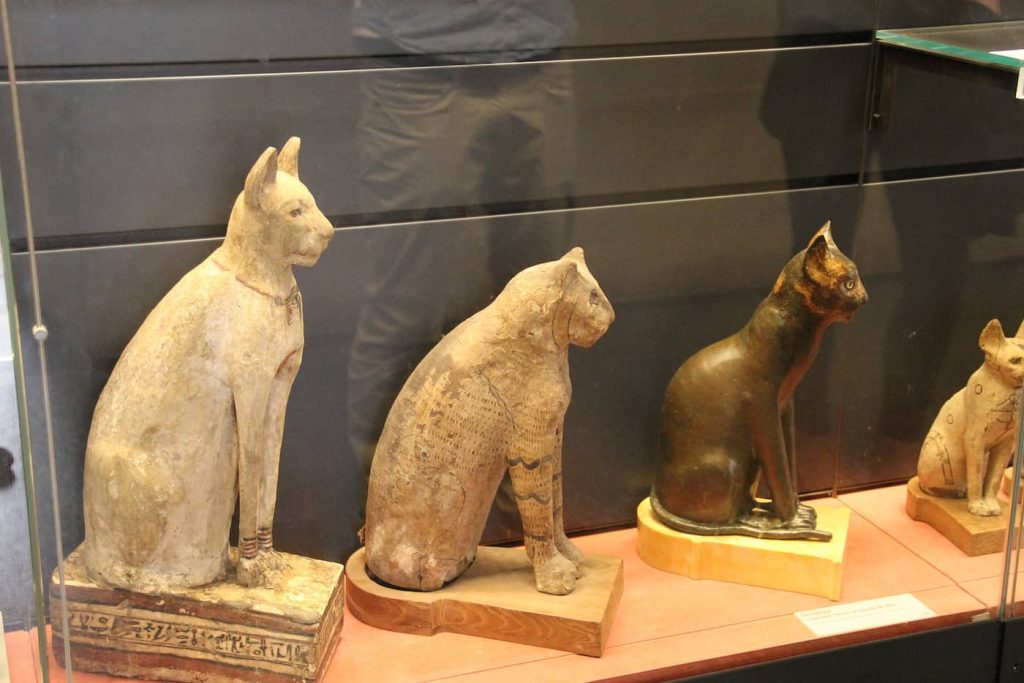
Ancient Egypt Cat
6. They Loved Board Games: Fun Facts About Ancient Egypt
The Ancient Egyptians were dedicated people whose lifestyle was not just wonderful pyramids and worship of ancient gods, but also the love of good fun. Among the activities they liked was the playing of board games, which cut across the social divide from royals to peasants. These could be played just for leisure or for religious purposes as well, particularly with reference to death and the afterlife.
The best-known and most widely played game is Senet, an abstract strategy game played on a board of thirty squares. Several small pieces and drawing sticks, which worked similarly to inlaid tantra, are used by players to traverse the board as they try to reach the end without any hindrances. Senet was not played just for entertainment but was also perceived as guiding one’s emotions or spirit in the journey through the afterlife. This is why it was often enclosed within tombs; hence, the game’s continuance was assured even after death.
Another frequently played game was Mehen, which featured a snake deity in its title. The board was designed as a twisted snake, and players moved carved lions inside the puzzle design. Mehen may have been a game involving several people at the same time, implying a possible connection to other social activities surrounding protection or even death and rebirth rites.
All of these games clearly show how the ancient Egyptians’ entertainment involved games, competitions, and the symbolic representations of their lives. To sum up, they made their pastimes a worship because they wanted to remember playing their games in heaven.

7. The Great Pyramid Was a Marvel of Engineering
The Great Pyramid of Giza, commonly referred to as the Pyramid of Khufu or Khéops, is not only a representation of the ancient civilization of Egypt, but it also serves as one of the major civilizations in the history of mankind. It took close to 20 years to finish the Great Pyramid, which was begun towards the end of the reign of the Pharaoh. Completed around 2560 BCE during the Fourth Dynasty, it was built using over 2.3 million limestone and granite blocks, each weighing between 2 and 15 tons.
Its perfect alignment with the cardinal points (north, south, east, and west) and its mathematical precision show that the builders had extraordinary knowledge.
Once upon a time, the Great Pyramid was covered in glossy white Tura limestone, and it is believed that it flashed in the sunlight like a searchlight. There were marble tiles on the outside of the pyramid. However, in the course of time, most of the construction materials were taken away for the construction of other facilities.
Even at present, it is unclear how the pyramid was built. There are numerous versions: from special huge cables to fabulous underground untapped technologies; however, one fact remains unchanged: the Great Pyramid continues to be a stunning wonder of ancient engineering accomplishments.

The Great Pyramid of Giza (Pyramid of Cheops or Khufu)
8. The Brain Wasn’t Important. The Heart Was
The way of thinking in ancient Egypt highlighted the fact that the heart was more important when it comes to human feelings, memory, emotional intelligence, soul, and many other functions that people have attributed to the brain. To them, the heart is the most important element of a person, which not only identifies a person but also determines their morality. They had the impression that the brain was unimportant if not bothersome. Such an attitude towards the brain was prevalent not only in their social and medical issues, but also in the burial itself.
Why the Heart Ruled in Ancient Egypt
We know from history that mummification was a very long process and involved several internal organs being removed to help preserve the body for the afterlife. The stomach, intestines, liver, and lungs were kept in jars known as canopic jars, each of which was protected by a different god. The human organ that was most frequently taken out of the body was the heart, as this was an instrumental organ in the myths surrounding the weighing of the heart. The heart was deemed so important in evaluating the dead person’s heart and principles that the embalmers would either not remove the preserved one from the body or would not place it back in if it had been removed. The dead people were convicted in a court of law, and if the person’s heart was full of wickedness or sin, the Dead would devour it.
However, the nose was the typical extraction point for the brain because it would be pulled out with a hook and thrown away, since they believed it had no major role in the body.
This intriguing belief is well-detailed from the fact that the ancient Egyptians had a different interpretation of the human body and how religious ideas manifested in their medical and burial practices.
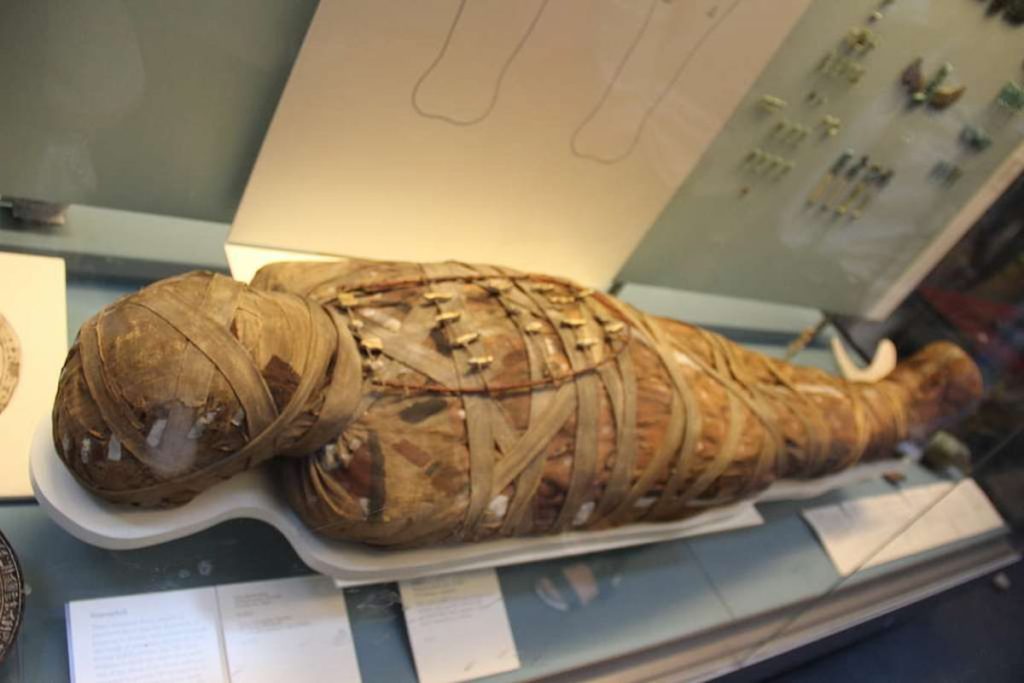
9. Makeup Was for Everyone in Ancient Egypt | Fun Facts About Ancient Egypt
In the land of the Pharaoh, cosmetics were considered a way of life and culture, not just a form of beauty. There were women, men, and occasionally children in makeup every day, and the reasons for such were not limited to the desire to be attractive only. The most popular product was the kohl eyeliner. These are dark pigments made out of powdered minerals, especially galena or malachite, which were used around one’s eye in very thick lines, not only because it was used in drama but also because it helped cut down the amount of sunshine in their eyes, just as black athletes apply paint near their eyes while performing.
However, the use of this aesthetic artifact is interesting, as it has both an aesthetic and a medical use. It is known that lead-based compounds contained in Egyptian eye cosmetics, like the kohl, had anti-bacterial properties, which further helped in preventing eye infections as a result of riverbank dust or the sun. It was more than just a decoration; it was preventive.
Moreover, cosmetics were an integral aspect of spiritual culture, too. As makeup was applied carefully during these performances, in most cases, magical mirrors were used to assist. Eye cosmetics had a certain mystical matter, as it was considered that they protected women from attack by evil spirits or the evil eye.
Despite one’s social rank in ancient Egypt, be it a king or peasant, using cosmetics was a tradition every day, for health or even magical enhancement, which often helped in revealing fashion, and as soon as it appeared, also disappeared. The functional and religious aspects of cosmetics exceeded the boundaries of physical ornamentation and identification of the people who wore these cosmetics.
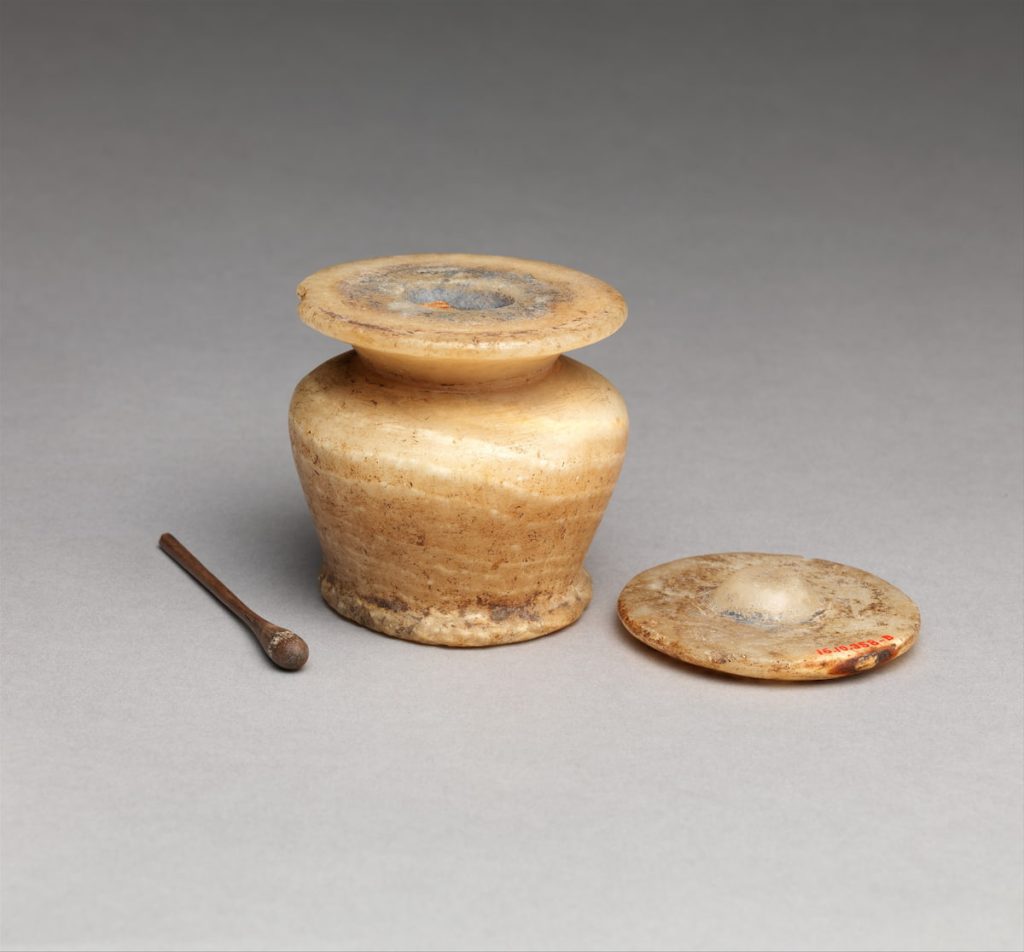
10. Beer Was a Daily Drink Fun Facts About Ancient Egypt
Back in ancient Egypt, beer was more than just a drink; it was a daily diet component amongst people of any age, irrespective of status, including minors. The modern light beer is closer to a soda drink than to the ancient thick, cloudy beer made out of fermented barley and cooked bread. This thickness was since the bread was baked halfway and left to cool; when crumbled, added to the already thick fermenting barley, giving a highly viscous paste-like liquid. It was nourishing, full of energy, and calorific content suited for workmen, peasants, and everyone with a need to keep working under high temperatures.
It was not only a popular beverage, it was a lot rather. Ancient Egyptian life had abundant sources of water, such as the River Nile, for daily use and irrigation, leading to less clean water, thereby making beer an even more desirable beverage. The process of brewing destroyed unwanted organisms in water, rendering beer a still ‘cool’ drink, considering that it was often spiked with fruits to make it more enjoyable or drinkable.
Beer Was Life in Ancient Egypt
Being integrated into space, and conducted as well as in other ways, a religious alcohol had its place. Here, it was normal to drink and even to engage in liberal festive activities with drink on the premise that it was exclusively for worshipping purposes and the gods. Even tombs contained food and drink for the afterworld, and not only bread was placed in non-alcoholic form, but also beer. People would even go to the temples and find that there were breweries on site. Hence, people would go to the temples and find that they also had breweries. Hathor was the goddess of joy, music, and drunken revelry.
Workers in Ancient Egypt were sometimes paid with beer, especially those who worked to build the pyramids or temples. Beer was essential; this was not considered a mere luxury item; it was an extremely important part of daily life, religion, and the social fabric among the ancient Egyptians.

11. They Invented the 365-Day Calendar
Millennia before the Roman traditions of formulating dates and marking them in the calendar, Egyptians managed to make an ancient Egyptian calendar of 365 days, which is the basis for the one that is observed today. But the reason behind planning all twelve months spread over two six-month periods, followed by the five-day excesses, directed each month was somewhat clear. The odds against getting the compounded twelve-month calendar all perfectly even are better with the organization of six months, rather than ideas about months alone.
It was a known fact that the risk of not accepting the whole twelve-month year system in this manner and still retaining the calendar without additional days was the greatest, especially due to the five additional days and any other days that may have been there from previous revisions, which would demand to be accounted for in the year’s calculations.
Timekeeping by the Stars and the Nile
Over the 12 months, there were 12 months of 30 days, each month of 12 months containing 360 days. To this, 5 extra ‘epagomenal’ days were allocated at the end of the year. The 5 additional days were holy days during which the birthdays of certain key deities, Isauras, Hradia, Thai, Ist, and Nephtus, were observed.
With the rising of the star Sirius in the sky (also referred to as Sopdet to the Egyptians) at the beginning of the year, the people believed that the floods would start anytime soon.
To this end, the fact that most conditions critical to the annual inundations were well known to cause the bodies to move significantly in space was particularly important.
With time, the basic cycles of the calendar came to be associated with myths. When they practiced agriculture, they discovered plenty of views which even led to the development of the geometric system, which concerned fields of cultivation and water débat.
This story of the Nile shows the arrogance of some modern Europeans who believe that they are the only people who have been able to successfully utilize the natural wealth of the world.

12. Hair Was a Hassle, So They Shaved It. Fun Facts About Ancient Egypt
Back in the days of Ancient Egypt, human hair was considered merely a bothersome and of no importance as far as beauty or power was concerned. Most Egyptian women, forced to keep their heads shaved in the scorching heat, would cut their hair as short as blonde short hairstyles for black women and sometimes wear hair dearth argued that the latter was the better decision for their scalp health, as presented in some elegance for black women curly hair organizers made of excess hair in women’s loose hair in order not to lose any minute hairs, like the way haircuts thin widow’s peak longer hair out men does.
Shaved Heads, Styled Lives
But wearing wigs instead of hair was not a simple disadvantage in certain groups. The Egyptians placed a high regard upon appearance and therefore covered their heads with artificial wigs made of human hair, as well as wool and vegetable fibers. These wigs were both of a certain length, from shoulder length to larger and more elaborate ones that were actual masterpieces, either embroidered with small beads, such as gold or scented wax that released the best aromas.
These wigs were not limited only to the rich, but they were also worn by those of the working class and people of average income, especially for those who needed them for celebrations, religious rites, and public activities, or people in the political or social scene. Even in children’s cases, heads and hair were shaved, leaving only a few millimeters at the top in what is still popularly referred to as a single “sidelock of youth” in hair customs nowadays.
Hair removal extended far beyond just the top of the head; other body hairs were also regularly removed by depilation methods or with tweezers. Keeping the body clean-shaven and wearing a good wig wasn’t just about fashion in Ancient Egypt; it was a matter of health, hygiene, and honour.
13. King Tut’s Tomb Was a Sensation
Famously, in 1922, British archaeologist Howard Carter achieved one of the greatest historic discoveries in the field of archaeology: he found the unspoiled tomb of Tutankhamun, who goes by the name “boy king” of the Egyptian empire. The tomb was located in a chamber beneath the Valley of the Kings, and it had been largely preserved since its completion 3000 years ago. This preserved state prevented robbers from destroying it, unlike so many other royal tombs located in the desert sands.
At the first opening of the tomb, the press were able to witness it. They asked him what he could see, and he instantly answered the famous, “Wonderful things.” This was an understatement. The treasury was incomparably rich with bunches of golden shrines, chariots, tables, cosmetics, plates with food, and the most famous (and often the most important nonetheless) golden death mask, which was indeed the face of all the topics concerning the Egyptian empire throughout the ancient years.
Tutankhamun himself died young, around the age of 18, and his reign was relatively uneventful. Nevertheless, the wealth of his grave, the enigma of his sudden passing, and especially the way the discovery all came out like a movie script, quickly caught the world’s attention. This led to the excitement of the Tutankhamun phenomenon, one hundred years old, the so called ‘Tutmania’ of the 1920s, and rekindled interest in ancient Egyptian history and culture worldwide. Up to this very day, the burial site of King Tutankhamun is a fine treasure, the opulent past, and also the history of Egypt’s royalty that never fades.

King Tutankhamun’s tomb plan
14. Amulets and Spells Were Everyday Tools
Magic was not looked at as some supernatural phenomenon in Ancient Egypt; it was a part of life itself. The world under the Egyptians’ rule was like that of any other, in that tension thrived, solely in greater and, in some cases, to an equal degree in the minor. Persuaded by these beliefs, the people used amulets, spells, and performed rituals in order to get favor from the gods and other spiritual forces.
Amulets are golden, iron, copper, or wooden objects enchanted with customary spirit. They belonged to gods, animals, symbols, or sacred items for previous use. For instance, the Eye of Horus presented protection against danger, the scarab beetle guaranteed resurrection after death, and the ankh sign epitomized welfare, life, and health. This is a part of what many call afrona, blessings, or koboka, which is a word that simply means a protective spell or a good luck charm. These were worn by the living and placed on the mummy for the eternal security of the dead.
Ancient Egyptians also used magic, or “spells.” Some were recited for healing purposes or to ensure fertility or protect against danger, while other spells were inscribed on papyrus, then carried or buried with the dead. The Book of the Dead, as known today, was a compendium of spells intended to help the dead out of the afterlife.
Magic, or heka to the ancient Egyptians, was a force that existed in the divinity; that is, a gift from the gods. This concept was effortlessly integrated into creeds, ideals, and daily chores, which underscores that the spiritual realm was always present and defended.
15. The World’s First Strike Happened in Egypt
Even though people might remember the great things housed in early Egypt, such as the Great Pyramids and the lauded rulers that built them, there is arguably something else that it gave the world, and this is the Holy Grail of all strikes in the history of work. This unforgettably astounding event unfolds in particular around 1155 BC, at the height of Ramses III’s rule near Deir el-Medina, a place in which most of the Valley of the Kings remained unpreserved, awaiting building by craftsmen.
Workers, who performed manual labor, were considered the best-paid category; in particular, their wages, mostly in the form of grain, beer, fish, or other essential commodities, were provided to them regularly, other than money. In most cases, not until the political and economic environment worsened, and continued to delay the payments of workers did these workers agree that enough was enough. They resorted to putting down their tools, ceased all forms of work, and nothing at the workers said was going to make them change their minds.
The workers engaged in a more combative approach and made their way to the various temples and sat within the temples, stating they would not move until their grievances were addressed immediately. The Kershout papyri that exude their grievances were recorded, and some copies have even been preserved.
The strike was tranquil and fruitful in the end: the workers finally received their wages, and the construction was restarted. This incident is among the first of its kind regarding organized dissent, demonstrating that in a society wherein the pharaoh was considered a deity, even common people could raise their voice and fight for their entitlement.
3. Conclusion
Ancient Egypt was much more than its well-known pyramids and the stories of mummies. The civilization is a bubbling beauty that speaks of dense creativity as well as endless surprises and eccentricity. It’s funny to narrate just how everything pertains to this period from sacred felines that are treated like highborns, experienced even by priests with paints on, to toddlers being served alcoholic beverages or how some of the very first labor disputes took place in Ancient Egypt; facts that, known as ‘plays within history’, betray a populace that combines religion and practicality. They have a world teeming with magic, history, traditions, and even science so advanced for their era it may well be safe to say they were not preoccupied with just the hereafter, but also pursued other good life values.
They pass away the fact of the existence of an African ethnos without seeming them to be a static population confined alive beneath pyramids and within temples. From the idea of the calendar and of making protective amulets, to the sight of the precision when constructing the Great Pyramid itself, all these renewed activities originated under their efforts, and hence we appreciate them in the various dimensions of today’s civilization.
Want to find out more about ancient civilizations and myths? Go through the other blogs on the Egyptian divinities, shrines, kingdom lines, the never-ending puzzle in Egypt, and the Nile. Those who delve into Egypt will soon discover that any tiny thing, such as a cat figurine or an ancient board game, has a story going back to times out of historical records.


